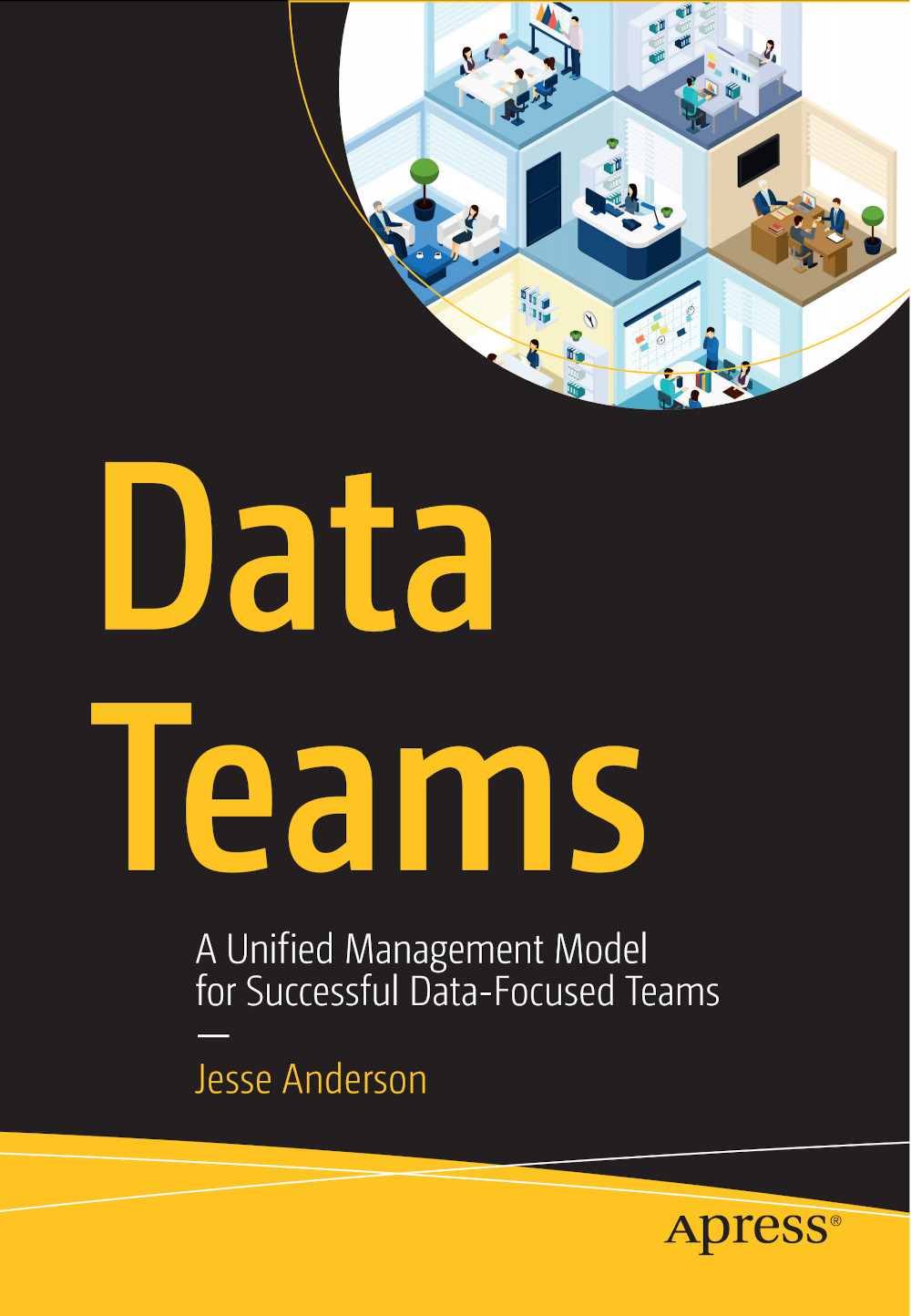Data Teams
Table of Contents
The book is divided into four parts and 19 chapters. These are the parts, the chapters, and a brief description of each.
Part 1 Introducing Data Teams
Chapter 1 Data Teams – Introduces the basics of data teams and why they are important.
Chapter 2 Successful Data Teams – This Shows how all three data teams are required to be successful with big data projects.
Part 2 The Teams
Chapter 3 Data Science – Goes in-depth into what a data science team is and does. It covers what a data scientist is and their required skills.
Chapter 4 Data Engineering – Goes in-depth into what a data engineering team is and does. It covers what a data engineer is and their required skills.
Chapter 5 Operations – Goes in-depth into what an operations team is and does. It covers what an operations engineer is and their required skills.
Chapter 6 Specialized Staff – Covers two emerging trends in data teams. It shows what machine learning engineers are and how they cover the gap between data scientists and data engineers. DataOps is emerging as an advanced way to maximize the team’s output by having all of the skills required for an end-to-end data product creation on a single team.
Part 3 Working Together
Chapter 7 Working as a Data Team – Shows the real-world and day-to-day interactions between the members of data teams.
Chapter 8 How the Business Interacts with Data Teams – Data Teams require continuous interaction with the business to create usable data products. I show how the business’ job goes beyond the data strategy.
Chapter 9 Managing Data Projects – Covers the long-term management of data teams and how to create good data products.
Chapter 10 Starting a Team – Shows how to start data teams from scratch and what their reporting structure should look like.
Chapter 11 Steps for Successful Big Data Projects – Covers the basic steps for making sure big data projects are successful by breaking down the pre-steps, steps during the project, and the ongoing steps.
Chapter 12 Organizational Changes – Goes into the changes that need to be made with existing teams and dealing with the politics of data projects.
Chapter 13 Diagnosing and Fixing Problems – Goes through the various symptoms of data teams’ problems and suggests fixes for those problems.
Part 4 Case Studies and Interviews
Chapter 14 Stitch Fix – Interview with Eric Colson and Brad Klingenberg on how Stitch Fix runs their data teams and the business benefits leveraging data brings.
Chapter 15 Dmitriy Ryaboy – Dmitriy started Twitter’s data engineering team and shares some of the challenges of processing data at Twitter’s scale.
Chapter 16 Bas Geerdink – Bas was a manager at ING as the CEO rolled out a top-down data strategy that his team had to implement and foster.
Chapter 17 Harvinder Atwal – Harvinder is the Chief Data Officer and talks about how he’s used DataOps to reduce friction and start leveraging data.
Chapter 18 British Telecom – This interview is with a large British telecom company and shows the issues with changing to a data-driven mindset inside large enterprises.
Chapter 19 Mikio Braun – Mikio shares the journey Zalando made with their data teams and how they socialized the value of machine learning within the company.
Bonus BOOK Interview
As a special bonus, I did another interview with another company. This interview gives a long-term view of how they managed, hired, and organized their data teams. To get the interview, fill out the form below and I’ll email you the link.
